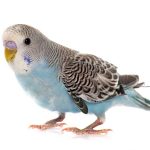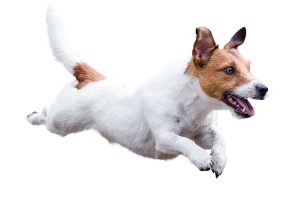Humans Are from Mars, Pets Are from Venus
30 Nov 2017
A little understanding of your pets goes a long way toward improving their lives
By Ruthanne Johnson Do you ever wonder if you’re doing right by your pets, if you truly understand their needs and are giving them the best life possible? Dogs, cats, turtles, birds and horses are unique species with their own needs and ways to communicate. Yet we often bring these animals into our lives without knowing much about them.

Dogs see the world in hues of yellow, blue and gray.
When buying toys, look for ones your dog will notice, like bright yellow or blue. Also think about contrast: Red, for instance, can be difficult for dogs to see against green grasses and dark carpets. Yellow, blue, black and white may be easier to spot, depending on the background.Dogs and cats have a sense of smell many times more powerful than that of humans.
Can you imagine, then, how much they’re irritated by secondhand smoke, heavy perfumes and household cleaners? Even aromatherapy oils can be overwhelming. Provide your pet with an exit route in case strong smells become too much for them.Cats are typically quiet creatures, seldom communicating with sound.

Dogs can laugh and get jealous.

Cats are physically and emotionally sensitive.
They’re fascinated by a light, featherlike touch along the tips of their hair. Your cat will probably respond by arching her back against your hand and purring, Frazier writes in her book The Natural Cat: The Comprehensive Guide to Optimum Care, considered the holistic bible for cat caregivers (Galaxy touts the book as important in opening his eyes to the cat’s world). The touch technique is great for frightened, ill and arthritic cats, adds Frazier.A dog’s yawn could mean your dog is anxious about something or indifferent toward an aggressor.

Cats consider it rude for you to tromp over and sit beside them without asking permission.
If you have more than one cat, watch their polite ritual when sidling up to each other, Frazier suggests. The one who jumps up typically licks the sleeping cat, which is the equivalent of asking, “May I?” The other cat may return the grooming with a casual lick, indicating acceptance. Or he could ignore the gesture, showing basic neutrality, or lift his head and growl, indicating rejection.Dogs pant to regulate their body temperature, and when they’re nervous, frightened or in pain.
Cats pant as a last resort in extreme heat and also in conjunction with myriad health problems. Provide a way for pets to warm or cool themselves: beds that soak up the sun, a water source, etc. Geriatric pets cannot regulate their body temperature as well and need more options, like a heating pad or cool rag on the paw pads and forehead. Just like elderly humans, they need other accommodations, such as ramps for easier access to the backyard; carpet runners along their pathways to prevent them from falling on hard floors; and elevated bowls for better eating and drinking ergonomics.Dogs don’t like being petted on the top of their head.

Animals have their own languages.
It’s up to us to crack the code by observing and taking note. Animal behaviorists have found that dogs greet people they like with a stretch. They bow with their butts in the air when ready to play, and lean on us to show affection. Paying attention opens the door to better understanding and communication, and a better relationship with your animal companion.A Word About Other Pet Species


Ruthanne Johnson is an award-winning journalist and a former staff writer for the Humane Society of the United States. She loves promoting animal welfare and environmental conservation, and discovering unique destinations.












